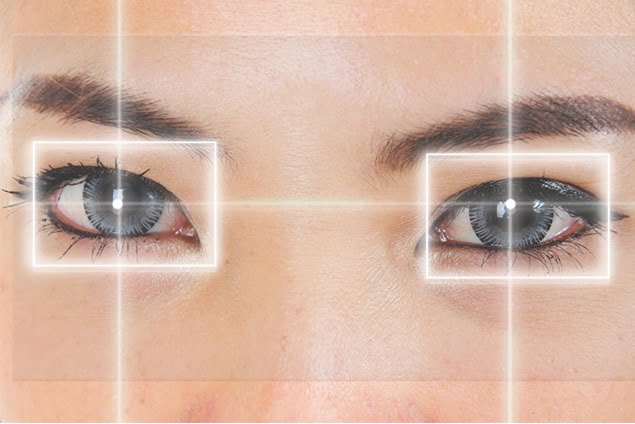Relex SMILE is a revolutionary vision correction procedure that has recently gained significant popularity. With its minimally invasive technique and rapid recovery time, Relex Smile has become a preferred choice for individuals seeking freedom from glasses and contact lenses. In this article, we will explore the procedure, its benefits, and how it compares to traditional LASIK surgery. So, let’s delve into the world of Relex Smile and discover how it can enhance your vision and quality of life.
Contents
Introduction to Relex SMILE

Relex SMILE, short for Refractive Lenticule Extraction, Small Incision Lenticule Extraction, is a laser eye surgery designed to correct vision problems such as nearsightedness (myopia) and astigmatism. This innovative technique was developed as an alternative to traditional LASIK, aiming to address its limitations while offering similar visual outcomes.
Unlike LASIK, which involves creating a corneal flap, Relex SMILE uses a femtosecond laser to create a small, precise incision in the cornea. Through this incision, a lenticule—a thin, disc-shaped piece of corneal tissue—is removed, reshaping the cornea and correcting the refractive error. The entire procedure is performed with computer-guided precision, ensuring accuracy and minimizing the risk of complications.
Benefits of Relex SMILE
Relex SMILE offers numerous benefits that make it an attractive option for vision correction:
- Minimally Invasive: With its small incision size, Relex SMILE minimizes the disruption of corneal nerves, resulting in reduced dryness and faster recovery.
- Swift Recovery: Most patients experience a quick visual recovery within 24 to 48 hours after Relex SMILE surgery, allowing them to return to their daily activities with minimal downtime.
- Enhanced Stability: The structural integrity of the cornea is better preserved in Relex SMILE compared to LASIK, leading to improved long-term stability and less likelihood of corneal ectasia.
- Less Discomfort: The absence of a corneal flap in Relex SMILE reduces the chances of complications such as flap dislocation or displacement, providing a more comfortable experience.
- Wide Range of Correctable Vision Issues: Relex SMILE can effectively address myopia, astigmatism, and in some cases, even mild to moderate hyperopia (farsightedness).
Comparison with Traditional LASIK
Relex SMILE offers several advantages over traditional LASIK surgery:
- Incision Size: Relex SMILE uses a smaller incision compared to LASIK, which minimizes the disturbance to the corneal surface and reduces the risk of dry eye syndrome.
- Flap Creation: Unlike LASIK, Relex SMILE doesn’t require the creation of a corneal flap, making it a safer and more stable option.
- Preservation of Corneal Strength: Relex SMILE preserves the structural integrity of the cornea better than LASIK, reducing the risk of complications such as corneal ectasia.
- Dry Eye Syndrome: Relex SMILE has been shown to have a lower incidence of dry eye symptoms compared to LASIK, making it a favorable choice for individuals prone to dry eyes.
- Surgical Time: Relex SMILE typically has a shorter surgical time compared to LASIK, resulting in a more efficient and comfortable experience for the patient.
- Enhanced Safety Profile: The minimally invasive nature of Relex SMILE reduces the risk of flap-related complications, offering a higher level of safety and peace of mind.
Eligibility for Relex SMILE

While Relex SMILE is an advanced vision correction procedure, not everyone may be eligible for it.
The suitability for Relex SMILE is determined through a comprehensive eye examination conducted by an experienced ophthalmologist. Factors that are taken into consideration include the severity of the refractive error, corneal thickness, stability of the prescription, and overall eye health. It is important to consult with a qualified eye care professional to determine if Relex Smile is the right option for you.
Preparing for Relex SMILE Surgery
Before undergoing Relex SMILE surgery, your ophthalmologist will provide specific instructions to ensure optimal results and minimize the risk of complications. These instructions may include:
- Discontinuing Contact Lens Use: It is typically advised to stop wearing contact lenses for a specific period before the surgery to allow the cornea to return to its natural shape.
- Medication Review: Inform your ophthalmologist about any medications you are currently taking, as some medications may interfere with the healing process or increase the risk of complications.
- Eye Health Assessment: A comprehensive eye examination will be conducted to assess the health of your eyes and ensure that there are no underlying conditions that may affect the surgery or recovery process.
- Discussing Expectations: Your surgeon will discuss your visual expectations and provide you with a realistic understanding of the potential outcomes of the procedure.
The Relex SMILEProcedure
The Relex SMILE procedure typically follows these steps:
- Anesthetic Eye Drops: Before the surgery begins, anesthetic eye drops are applied to ensure the procedure is painless and comfortable.
- Creation of Incision: Using a femtosecond laser, a small incision is made on the cornea to access the underlying tissue.
- Formation of Lenticule: The laser is then used to create a lenticule—a thin, disc-shaped piece of corneal tissue—within the cornea.
- Lenticule Removal: Through the small incision, the surgeon gently removes the lenticule, reshaping the cornea and correcting the refractive error.
- Cornea Reshaping: With the removal of the lenticule, the cornea undergoes reshaping, enabling light to focus correctly on the retina.
- Incision Self-Sealing: The small incision created during the procedure usually seals on its own without the need for stitches.
- Recovery Phase: Following the surgery, you will be provided with post-operative instructions for a smooth and speedy recovery.
What Measures To Take in the Recovery Period?

After Relex SMILE surgery, it is crucial to follow the post-operative care instructions provided by your ophthalmologist. These may include:
- Medications: Prescribed eye drops or medications will aid in the healing process and prevent infection.
- Resting and Protecting the Eyes: It is essential to rest your eyes and avoid activities that may strain them, such as heavy lifting or vigorous exercise, for the first few days after surgery.
- Avoiding Eye Irritants: Steer clear of environments with excessive dust, smoke, or other irritants that may impede the healing process.
- Regular Follow-ups: Attend scheduled follow-up appointments with your ophthalmologist to monitor your progress and ensure proper healing. These visits allow your surgeon to assess your visual acuity and address any concerns or questions you may have.
During the recovery period, it is normal to experience some mild discomfort, dryness, or fluctuations in vision. However, these symptoms typically resolve within a few days to weeks as your eyes heal. It is essential to refrain from rubbing your eyes and to use the prescribed eye drops as directed. If you have any concerns or experience severe pain or sudden vision changes contact your ophthalmologist immediately.
Potential Risks and Complications

While Relex SMILE is considered safe and effective, like any surgical procedure, it carries potential risks and complications. It is essential to have a comprehensive discussion with your ophthalmologist to fully understand these risks. Some possible risks and complications associated with Relex SMILE include:
- Dry Eye Syndrome: Although less common compared to LASIK, some patients may experience temporary or persistent dryness following Relex SMILE surgery. This can be managed with lubricating eye drops and usually improves over time.
- Undercorrection or Overcorrection: In some cases, the desired vision correction may not be fully achieved, resulting in slight undercorrection or overcorrection. Enhancements or touch-up procedures can be performed to refine the outcome if necessary.
- Infection or Inflammation: While rare, there is a minimal risk of infection or inflammation after Relex SMILE surgery. Following post-operative care instructions and using prescribed medications diligently can help minimize this risk.
- Glare or Halos: Some individuals may experience temporary glare, halos, or starbursts around lights, particularly at night. These visual disturbances usually resolve over time as the eyes adjust and stabilize.
- Flap-Related Complications (Rare): Although Relex SMILE does not involve corneal flaps like LASIK, there is a small risk of flap-related complications such as flap tears or dislocations during the procedure. However, this risk is significantly lower in Relex SMILE compared to LASIK.
Conclusion
In conclusion, Relex SMILE is a groundbreaking vision correction procedure that offers a minimally invasive and efficient solution for individuals seeking freedom from glasses and contact lenses.
Ultimately, Relex SMILE has revolutionized vision correction technology, offering individuals a reliable and advanced method to achieve clear vision and reduce dependence on visual aids. Consultation with an experienced ophthalmologist is crucial to determine if Relex SMILE is correct.
SMILE is the right choice for your unique circumstances. Embrace the possibilities that Relex Smile presents and experience the joy of enhanced visual clarity and freedom.
LASIK eye surgery is a safe 10-minute procedure to help you get rid of glasses. EyeMantra offers the most advanced LASIK options including PRK, Femto Lasik, SMILE surgery, Standard LASIK, ICL, and Contoura vision. If you have any questions on Lasik surgery in Delhi, Lasik surgery cost, and Lasik procedure, call us at 9711116605 or email at [email protected].


